FUNDING CUTS IMPACT CT HUMANITIES: Help CT Humanities navigate recent funding cuts and continue our vital work across Connecticut. All donations made to CTH will be matched dollar-for-dollar up to $50,000. Donate today!
Now Viewing:
Civil War
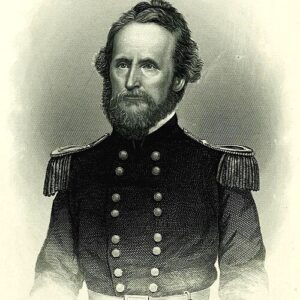
Nathaniel Lyon: First US General to Die During the Civil War
Eastford’s General Nathaniel Lyon became nationally famous as the first US general killed during the Civil War.
Read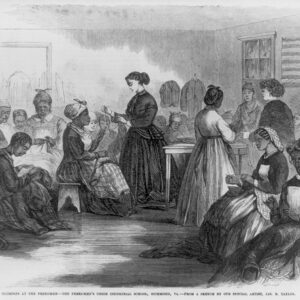
Hebron’s Josephine Sophia (White) Griffing and a Vision for Post-Emancipation America
From before emancipation and the 13th Amendment, Josephine Sophie White Griffing of Hebron, Connecticut, was an ardent advocate for enslaved and free people.
Read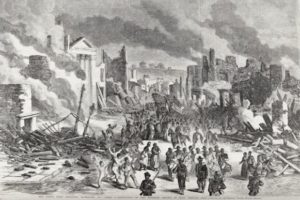
The 29th First to Enter Confederate Capital When It Surrenders – Today in History: April 3
On the morning of April 3, 1865, the 29th (Colored) Regiment Connecticut Volunteer Infantry awoke to find that the enemy had abandoned their positions in Richmond, Virginia.
Read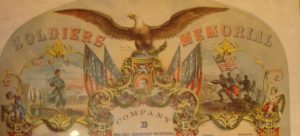
Connecticut’s Black Civil War Regiment
“If you win freedom and citizenship, we shall share your freedom and citizenship.” With these words, abolitionist Frederick Douglass reminded African American soldiers from Connecticut that they fought for the hopes of many.
Read
Little Sorrel, Connecticut’s Confederate War Horse
The horse Little Sorrel became one of the most famous residents of Somers, Connecticut, and a legendary figure of the Civil War.
Read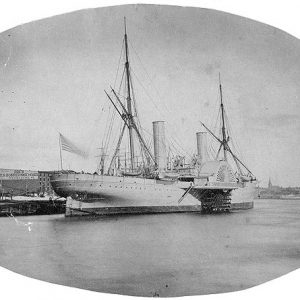
They Also Served: Chinese, Southeast Asians, and Hawaiians in the American Civil War
There were a substantial number of Chinese, Southeast Asian, and Pacific Islanders who fought in the Civil War—many of whom served in Connecticut regiments.
Read
Evaporated Milk’s Connecticut Connection – Who Knew?
In, 1856 businessman Gail Borden Jr. opened the first commercial milk condensery at Wolcottville (now Torrington).
Read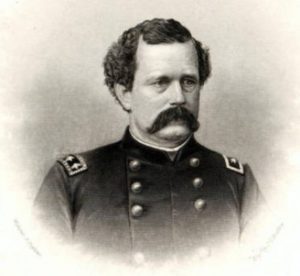
General Joseph R. Hawley Helps Commemorate Connecticut’s Civil War Soldiers
“Let monuments be raised in every town, let songs be sung and orations delivered,” urged this state politician and skilled speechmaker.
Read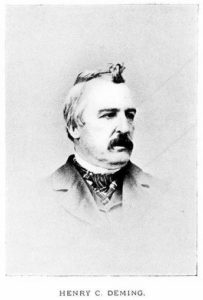
Henry Deming: Mayor of Hartford and New Orleans
Henry Deming served as mayor of Hartford and then as the provisional mayor of New Orleans during the Civil War before writing a biography of Ulysses S. Grant.
Read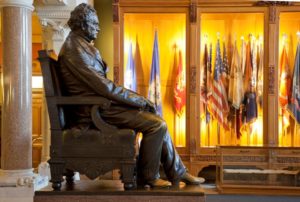
Collections: Battle Flags
“Keep them, keep them, as long as there is a thread left,” said one soldier of the regimental flag for the 6th Connecticut Volunteer Infantry.
Read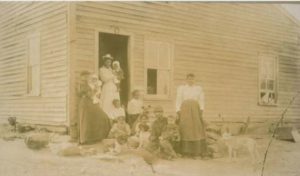
John Brown: A Portrait of Violent Abolitionism
John Brown of Torrington used violence to oppose the spread of slavery prior to the Civil War, ultimately leading a bloody raid on the armory in Harper’s Ferry, Virginia.
Read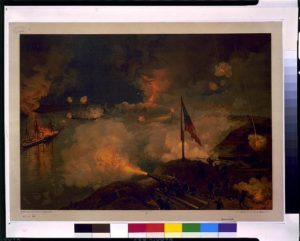
Connecticut’s Naval Contributions to the Civil War
Companies across Connecticut helped keep the Union navy afloat while sea-savvy leaders and sailors from the state kept it in fighting form.
Read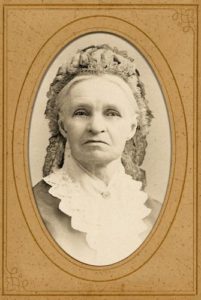
A Voice for Veterans: A Civil War era ‘Whistle-Blower’ – Who Knew?
Her obituary stated that “Mrs. Ambler was always expected to say something” on behalf of those who had fought for the Union.
Read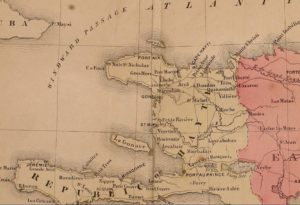
Ebenezer Bassett’s Historic Journey
Ebenezer Bassett, an educator, activist, and associate of Frederick Douglass, served the US as its first African American ambassador.
Read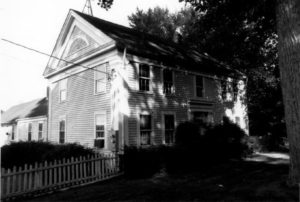
Franklin’s Ashbel Woodward was a Battlefield Surgeon and Historian
Ashbel Woodward was a physician, historian, and farmer who spent most of his life serving the town of Franklin.
Read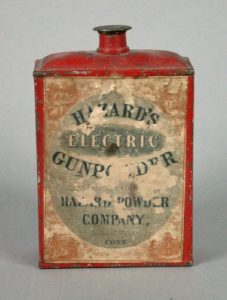
Colonel Augustus G. Hazard, Gunpowder Manufacturer – Who Knew?
By 1843, Augustus Hazard and partner Allan Denslow formed a joint stock venture called the Hazard Powder Company.
Read
Powder Hollow in Hazardville – Who Knew?
40% of all the gunpowder consumed in the Civil War came from Powder Hollow in Hazardville (a part of Enfield, Connecticut).
Read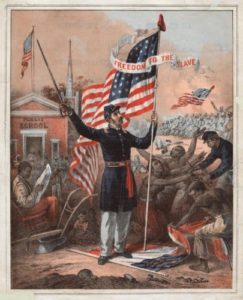
From the State Historian: Connecticut’s Slow Steps Toward Emancipation
Slavery remained in the Land of Steady Habits until 1848, and it was not quick to advance suffrage for African Americans, either.
Read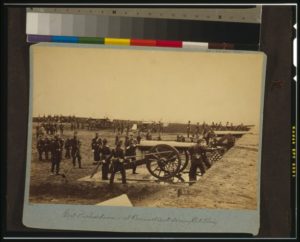
The Complicated Realities of Connecticut and the Civil War
The history of the Civil War surrounds Connecticut residents both in terms of its physical realities and in the lasting legacies of a complicated conflict.
Read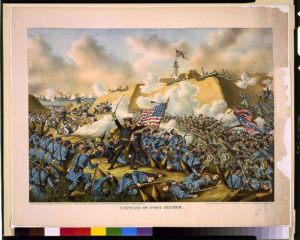
Alfred Howe Terry Born in Hartford – Today in History: November 10
Alfred Howe Terry’s greatest achievement in the Civil War was his capture of Fort Fisher in January, 1865.
Read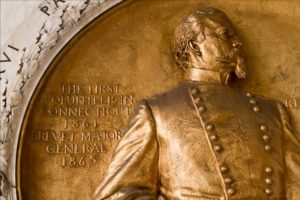
A Memorial to General Hawley at the State Capitol
Although not a native of Connecticut, one would be hard pressed to find a man more committed to the people of Connecticut than Joseph Roswell Hawley. He became Brigadier General of the 1st Connecticut Infantry during the Civil War and served the state as both a senator and as Connecticut’s 42nd governor. Within months of his death, the Connecticut legislature authorized construction of a memorial in his honor.
Read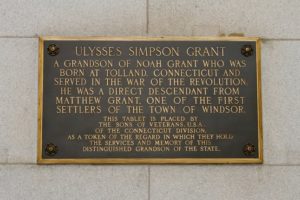
Unveiling of the Grant Memorial Tablet – Today in History: October 4
On October 4, 1916, the Ulysses Simpson Grant Memorial Tablet was officially unveiled in the north lobby of the Connecticut State Capitol building in Hartford.
Read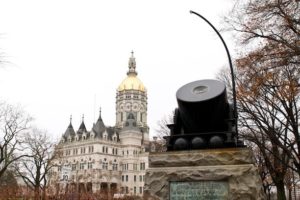
A Monument Memorializes the Fallen
In front of the state capitol is a mortar commemorating the service of the First Connecticut Heavy Artillery Regiment. The mortar may or may not be the original “Petersburg Express” used at the famous siege of Petersburg, Virginia, during the Civil War.
Read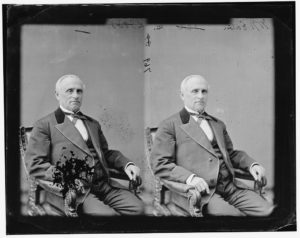
William Eaton, a Peace Democrat and Civil War Opponent
This 19th century Connecticut politician took a controversial stand against a war that would divide the Union and decrease states’ rights.
Read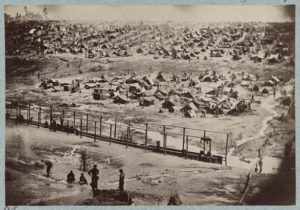
Remembering Civil War Prisoners of War
Outside the Connecticut State Capitol building in Hartford stands a monument to the Connecticut prisoners retained at the Andersonville Prison during the Civil War.
Read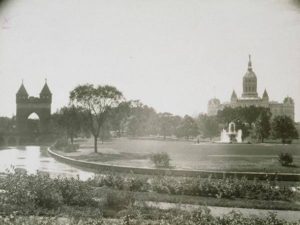
Soldiers and Sailors Memorial Arch – Today in History: September 17
In 1886, the Soldiers and Sailors Memorial Arch was dedicated to honor the 4,000 Hartford residents who served, and the nearly 400 who died, in the Civil War.
Read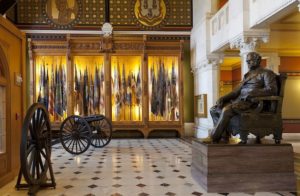
Hall of Flags: Memorial to Connecticut’s Civil War Colors
Battle flags played an important strategic and ceremonial role in Civil War battles. The preservation of Connecticut’s Civil War colors has been a long, delicate, and expensive process.
Read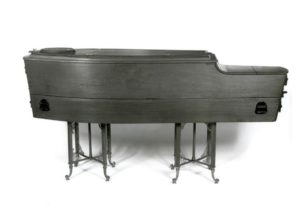
Death and Mourning in the Civil War Era
The Civil War transformed traditional practices of death and mourning in Victorian-era Connecticut.
Read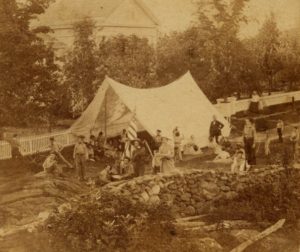
Reading, Writing, and the Great Outdoors: Frederick Gunn’s School Transforms Victorian-era Education
In 1850, this educator, prominent abolitionist, and outdoorsman founded The Gunnery, a school in Washington, Connecticut.
Read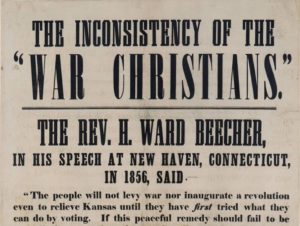
Henry Ward Beecher, a Preacher with Political Clout
This skilled orator championed woman suffrage, temperance, and the cause of anti-slavery but scandal nearly derailed his career.
Read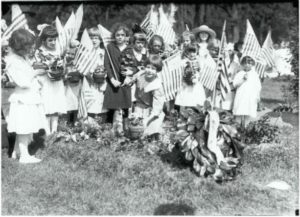
Memorial Day 1920 Brings a Changing of the Guard
In 1920, veterans groups played an active role in orchestrating Memorial Day observances in towns across Connecticut.
Read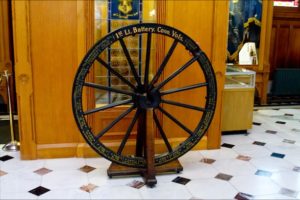
Gun Wheel of the First Light Battery, Connecticut Volunteers
A wheel damaged in battle now resides at the Connecticut State Capitol to commemorate the Civil War service of the First Light Battery Connecticut Volunteers.
Read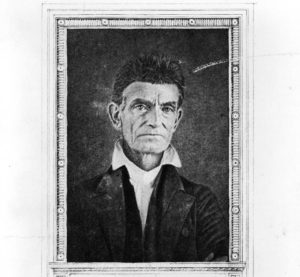
John Brown Born – Today in History: May 9
On May 9, 1800, the man who became a catalyst for the Civil War was born in an 18th-century saltbox house in West Torringford.
Read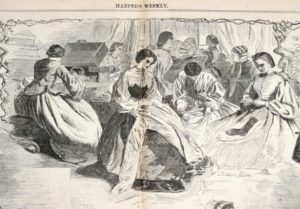
Crisis Management during the American Civil War: The Hartford Soldiers’ Aid Society
The Hartford Soldiers’ Aid Society was one of the most important relief organizations during the Civil War and provided new opportunities for women in the public sphere.
Read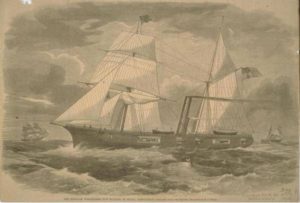
Ironclad Commissioned – Today in History: April 21
On April 21, 1862, the USS Galena was commissioned with a crew of 160 men.
Read
Bridgeport Women Answer the Call – Today in History: April 15
On April 15, 1861, the women of Bridgeport created the nation’s first soldiers’ aid society during the American Civil War.
Read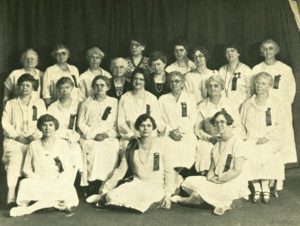
Celebrating Civil War Men and Women – Today in History: April 9
On April 9th, 1927 the Woman’s Relief Corps and Daughters of Union Veterans commemorated the 62nd anniversary of the surrender at Appomattox Courthouse.
Read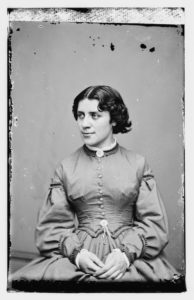
Anna Elizabeth Dickinson at Touro Hall – Today in History: March 24
On March 24, 1863, Anna Elizabeth Dickinson, a 20-year-old Quaker and abolitionist from Pennsylvania, spoke at Hartford’s Touro Hall.
Read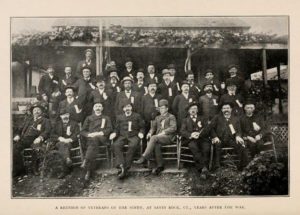
Fighting Sons of Erin: Connecticut’s Irish Regiment in the Civil War
Men with names like O’Brien, Kennedy, Mahoney, Murphy, Donnelly, Fitzpatrick, and Sullivan flocked to enlist in what a recruiting poster confidently described as a “destined to be gallant Regiment.”
Read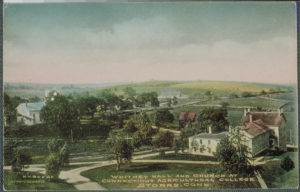
Connecticut Soldiers’ Orphans’ Home
In 1866, the Connecticut Soldiers’ Orphans’ Home opened in Mansfield to house and educate boys and girls left parentless by the Civil War.
Read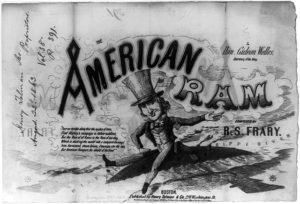
Gideon Welles, US Secretary of the Navy and Lincoln’s “Neptune”
Gideon Welles was the Secretary of the United States Navy from 1861 to 1869 and a cabinet member during the presidencies of Abraham Lincoln and Andrew Johnson.
Read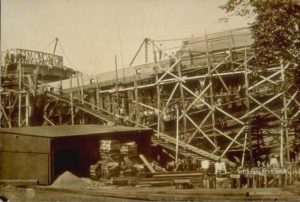
The Gildersleeve Shipbuilding Legacy in Portland
Perhaps the most recognizable name in the history of Portland, Connecticut shipbuilding is Sylvester Gildersleeve.
Read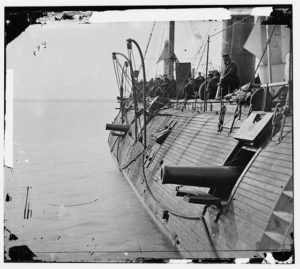
Mystic-built USS Galena Part of Plan to Strengthen Union Navy
This 950-ton, steam-propelled gunboat took fire from critics and Confederates during the Civil War.
Read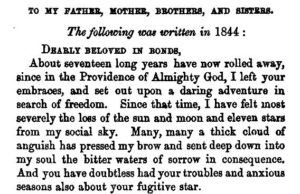
Reverend James Pennington: A Voice for Freedom
Having escaped from slavery in Maryland, this accomplished pastor, publisher, and freedom fighter challenged racism wherever he found it, even within the ranks of the abolitionist movement and the ministry.
Read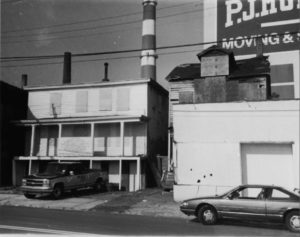
Mary and Eliza Freeman Houses
The Mary and Eliza Freeman houses are the only remnants of “Little Liberia,” a settlement of free African Americans in Bridgeport that began in 1831.
Read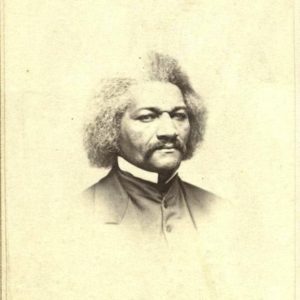
“An Admirable Portrait” of Frederick Douglass
Hartford photographer Stephen H. Waite capitalized on the public’s interest in the great abolitionist, Frederick Douglass.
Read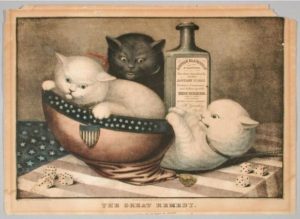
The Great Remedy: Picturing the Emancipation Proclamation
On January 1, 1863, the Emancipation Proclamation went into effect, declaring more than three million African Americans in those states in rebellion against the United States to be forever free.
Read
Sloop-of-War Ship’s Figurehead Lands at State Capitol
A figurehead from the USS Hartford currently resides at the Connecticut State Capitol and serves as a reminder of the state’s rich maritime heritage.
Read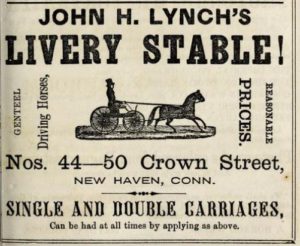
New Haven: What Was Everyday Life Like During the Civil War?
A great primary resource for digging into a community’s everyday life is a city directory.
Read
The Ulysses S. Grant Memorial Tablet
The Connecticut Division of the Sons of Veterans, USA, commissioned a memorial tablet to Ulysses S. Grant who led Union forces during the Civil War.
Read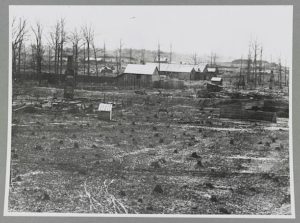
Connecticut’s Chickamauga Tree: An Investigation
The Connecticut State Capitol displays part of a tree with a cannonball lodged in it. While it is believed to be a remnant of the battle at Chickamauga Creek during the Civil War, evidence exists suggesting the artifact may have been fabricated for the purpose of commercial sale.
Read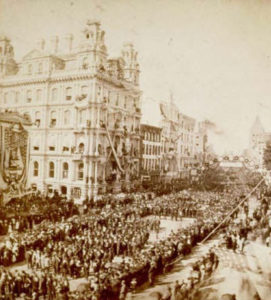
A Day of Celebration – Today in History: September 17
September 17, 1879 was a day of celebration in the City of Hartford when more than 100,000 people came to the city to celebrate Battle Flag Day.
Read
Sanitary Fair – Today in History: July 25
On July 25, 1864, the Stamford Ladies Soldiers’ Aid Society held a Sanitary Fair in response to the needs of Civil War soldiers
Read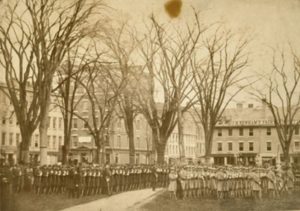
The First Battle of Bull Run: Connecticut Troops Stand Firm When the Battle Turns Against Them
Connecticut troops earned admiration for staying to fight when others fled at the First Battle of Bull Run during the American Civil War.
Read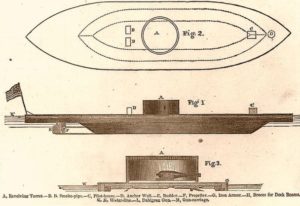
Cornelius Bushnell and His Ironclad Ship
Cornelius Scranton Bushnell was a 19th-century Connecticut businessman and shipbuilder whose successfully lobbied on behalf of a local railroad enterprise.
Read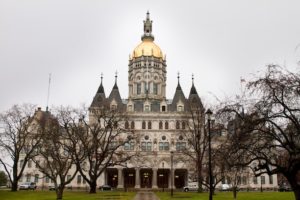
Connecticut’s Capitol Building – Inside and Out
The Connecticut State Capitol was built at a time when Civil War commemoration was gaining popularity.
Read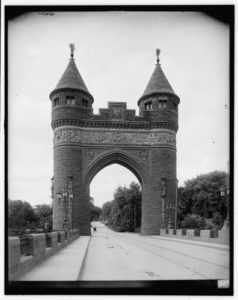
The Soldiers and Sailors Memorial Arch, Hartford
Situated in Bushnell Park, the Soldiers and Sailors Memorial Arch honors the more than 4,000 Hartford men who fought for the Union during the Civil War.
Read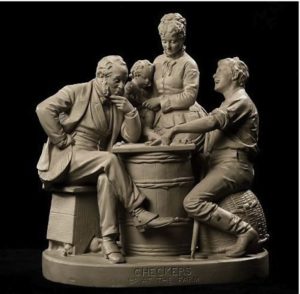
John Rogers was a 19th-Century Sculptor for the Common Man
John Rogers was an American sculptor whose style and production methods made his art popular with middle-class art collectors in the 19th century.
Read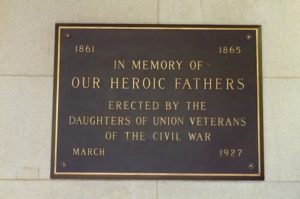
The Gettysburg Address and Heroic Fathers Bronze Tablets at the State Capitol
In 1927, two different women’s organizations dedicated plaques to commemorate events and service in the Civil War.
Read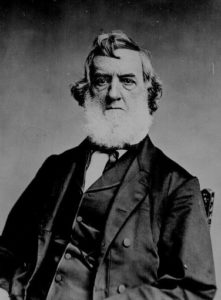
Gideon Welles Appointed Lincoln’s Secretary of the Navy – Today in History: March 7
On March 7, 1861 Gideon Welles was officially appointed into Abraham Lincoln’s cabinet as Secretary of the Navy.
Read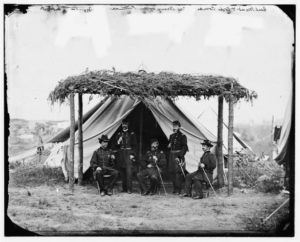
A Civil War Soldier Engineers an Iconic Career
Horatio Wright commanded troops in Civil War battles fought all over the country, from Virginia to Florida, and out West as far as Ohio.
Read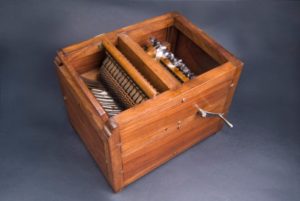
North and South: The Legacy of Eli Whitney
After studying to become a lawyer, Eli Whitney actually helped further American industrial production methods through his numerous clever inventions.
Read
Connecticut Arms the Union
By the Civil War’s end, Connecticut had supplied 43% of the total of all rifle muskets, breech loading rifles and carbines, and revolvers bought by the War Department.
Read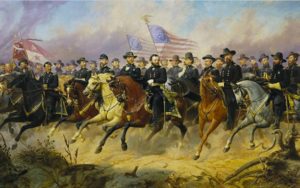
Honor and Duty: The Life of Alfred Howe Terry
Born in Hartford, Alfred Howe Terry studied law before heroically capturing Fort Fisher during the Civil War.
Read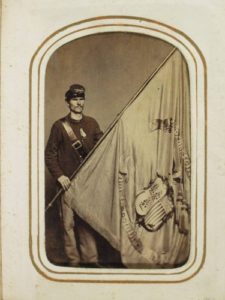
Disaster at Cold Harbor: Connecticut’s Second Volunteer Heavy Artillery Regiment
For many veterans of the Second, the assault at Cold Harbor would be the most terrible memory of their Civil War careers.
Read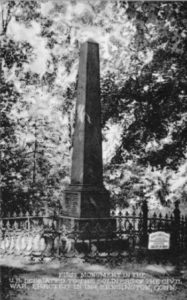
Kensington Soldiers Monument Dedicated – Today in History: July 28
On July 28, 1863, the Soldiers Monument in the Kensington section of Berlin was dedicated and is the oldest permanent Civil War monument.
Read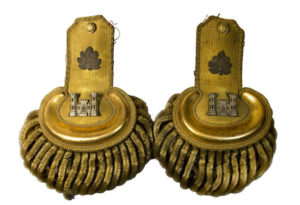
One of the Honored Dead: General J. K. F. Mansfield
A resident of New Haven and Middletown, Joseph Mansfield rose to the rank of brigadier general in the Union army before losing his life at the Battle of Antietam.
Read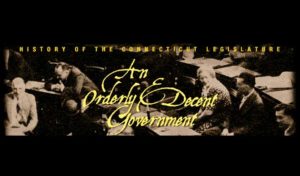
An Orderly & Decent Government: A Society in Ferment, 1819-1865
Industry, immigration, and urbanization characterized Connecticut in the 19th century.
Read
An Orderly & Decent Government: Searching for the Common Good, 1819-1865
During the early 19th century, the General Assembly was slow to deal with rising crime, poverty and the other social costs of a rapidly changing society.
Read
An Orderly & Decent Government: Significant Events & Developments, 1819-1865
Connecticut in the 1830s was characterized by a move from agriculture to industry, and the loss of residents to westward migration.
Read
Civil War Soldier Dies of Gangrene – Today in History: July 10
On July 10, 1864, Civil War soldier Curtis Bacon of Simsbury died of gangrene from injuries he suffered in combat nearly two months earlier.
Read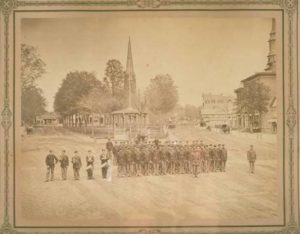
The Civil War Commences: Connecticut’s Involvement in the Civil War
Diaries, letters, and other documents provide firsthand witness to the sacrifices of Connecticut men and women during the years of bloody conflict.
Read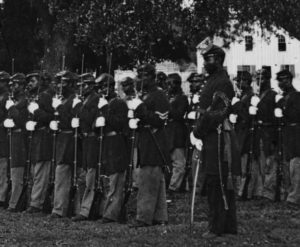
29th Connecticut Colored Infantry Regiment
The state’s first African American regiment of the Civil War distinguished itself by battling Confederate forces and 19th-century prejudices.
Read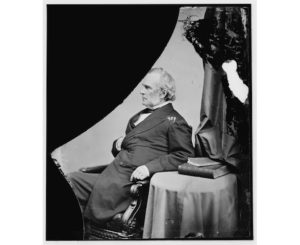
Connecticut’s War Governor, William A. Buckingham
Connecticut governor William Buckingham’s bronze statue at the Connecticut State Capitol honors his guidance of Connecticut through the Civil War.
Read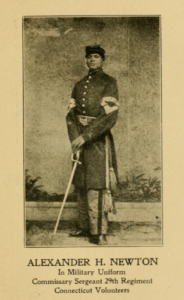
Connecticut 29th Mustered into Service – Today in History: March 8
On March 8, 1864, the state’s first African American regiment, the Connecticut Twenty-Ninth (Colored) Regiment, C.V. Infantry, mustered into service to fight for the Union’s cause in the Civil War.
Read
Civil War Monuments and Memorials in and Around the State Capitol
Monuments and memorials from the Civil War era in and around the state capitol in Hartford, Connecticut.
Read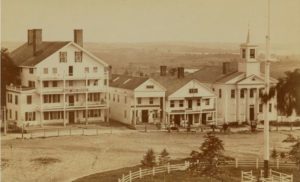
The Peace Movement in Litchfield
While the peace movement in Litchfield was short-lived, it provides a reminder of the disparity in public opinion during the first few turbulent months of the Civil War.
Read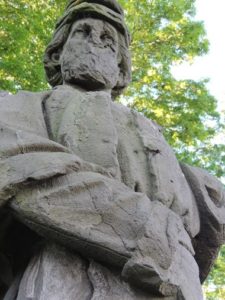
The Forlorn Soldier Statue
The Forlorn Soldier statue survived years of neglect, punishing weather, and efforts to tear it down.
Read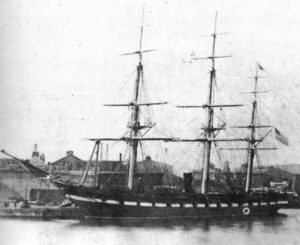
Commemorating the USS Hartford at the Connecticut State Capitol
The Connecticut State Capitol currently houses two important artifacts to commemorate the service of the USS Hartford.
Read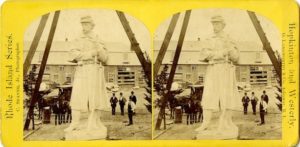
Pomp and Circumstance: Civil War Commemoration
The completion of the Forlorn Soldier did not meet with the pomp and circumstance of many other CIvil War commemorations, despite its media coverage and an overflowing sense of nationalism among the general public.
Read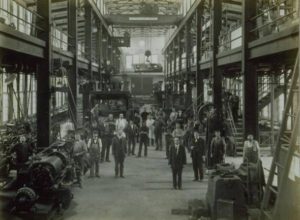
Christopher Miner Spencer, 19th-century Arms Manufacturer
Christopher Miner Spencer, from Manchester, obtained 42 patents during his lifetime and created the first successful breech-loading repeating rifle.
Read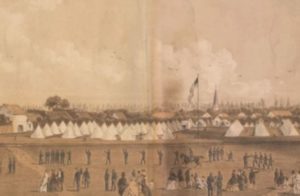
What’s in a Number? Connecticut’s Thirteenth Regiment Goes Off to War
So how lucky was the Thirteenth when it came to surviving combat, disease, and other perils of the Civil War? Read on to find out.
Read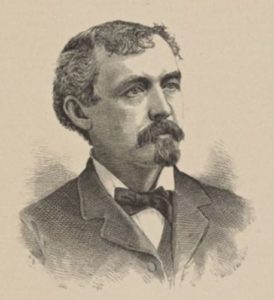
William Edgar Simonds: A Schoolteacher Turned Civil War Hero
Originally a teacher, William Edgar Simonds’ service during the Civil War launched Simonds into a life of politics and international acclaim.
Read
The 29th Connecticut Colored Infantry Regiment Leaves for War – Today in History: March 19
On March 19, 1864, the 29th Connecticut Colored Infantry Regiment was preparing for deployment to the South to fight in the Civil War.
Read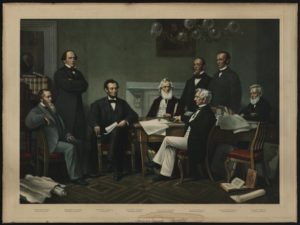
Gideon Welles’s Role in Lincoln’s Cabinet
Earning the trust of Abraham Lincoln, despite reservations from many in Lincoln’s cabinet, Gideon Welles navigated the Union navy through the Civil War. He did this largely through expanding the navy and investing in new technology, such as ironclad ships.
Read
James G. Batterson, Stone Contractor
James G. Batterson was an artist, inventor, and businessman. He helped commemorate the Civil War through his proficiency with stone.
Read
The 29th Regiment Connecticut Volunteer Infantry Flag and Display
Regimental flags played important symbolic and strategic roles in battle. The State of Connecticut maintains a collection of 110 such flags from the Civil War, among them, the flag of the 29th (Colored) Volunteer Infantry.
ReadMore Articles




